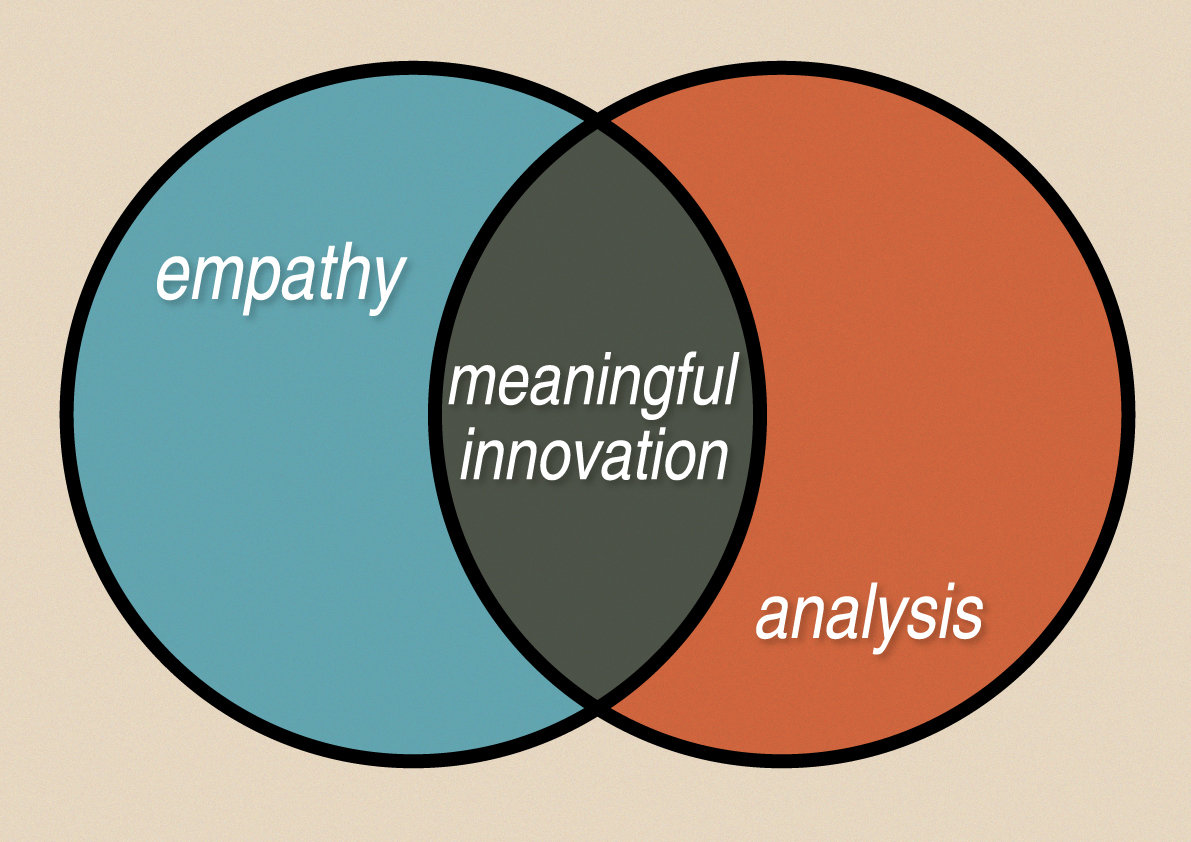
Stanford School of Design makes an interesting statement about how to create a meaningful innovation. They say to create meaningful innovations, you need to know your users and care about their lives. Philips, one of the world’s leading innovators in medical and domestic technology, say that meaningful innovation is all about understanding people and their experiences. So both Philips and Stanford suggest that truly meaningful innovation occurs when designers and engineers study people, not technology.
Innovation frequently does occur when new technology is developed. But a smaller digital camera or lighter weight headphones aren’t necessarily better; they’re innovative, but innovation for technology’s sake just doesn’t cut it. Great innovation should focus on human-centric problems, not technological ones.
In order to create truly human-centric innovation, designers and engineers need to be both analytical and empathetic. To be analytical means having the ability to analyze a situation carefully and thoroughly. Therefore they ask; what’s happening in this specific situation? To be analytical in this context means having the ability to be able to visualize, articulate and solve problems logically.
However, this skill set doesn’t necessarily produce a meaningful innovation. An end-user may report that carrying a particular product on their back gives them sore shoulders. The designer with a purely analytical approach may conclude that the straps need to be wider and have more padding.
But meaningful innovation requires more than simple problem solving. It also requires empathy. Stanford defines empathy in the context of design as “the work you do to understand people, within the context of your design challenge. It is your effort to understand the way they do things and why, their physical and emotional needs, how they think about world, and what is meaningful to them”. Therefore a designer or engineer who approaches a design challenge such as the problem of the end-users sore shoulders with empathy, may ask themselves; ‘Why are we asking the end-user to carry such a heavy weight in the first place? How can we make it lighter, or remove it altogether?’ By asking this the problem of sore shoulders may be solved without ever having to address the strap design.
This kind of design thinking can be applied across a broad spectrum of disciplines. For example, in March 2016 over 1,200 school leaders in the US headed into the classroom as part of the Shadow a Student Challenge. The goal was to help educators better understand the student’s experiences. If Stanford’s maxim to create meaningful innovations, you need to know your users and care about their lives, is true then finding out what it’s really like to be a student in 2016 is essential for meaningful innovation to occur in the education system. Some of the resulting tweets suggest it was a beneficial experience:
“2 classes, two 40+ question tests so far…the kids are such troopers! I’m exhausted already!”
Jonathan Adel (@jonathanadel).
“Health to ELA to Math…Communicable diseases to Text Features to an Algebra 1 test on Multi-Step equations = worn out :)”
Ed Gettenmeier (@egettenmeier).
“Spanish, Eng, math, now government…my head is spinning. I was so lost in math,”
Bradford Hubbard (@hubbardbradford).
(Tweets sourced from designthinking.ideo.com)
Who knows what clever, meaningful innovation may come from the Shadow a Student Challenge. Innovators may gain insights which can be applied to systems, methodology, education, and infrastructure as well as product design. Our own Canterbury Health Board is going through a similar process now in The Design Lab with exciting results.
Truly meaningful innovation requires more than just applying clever technological advancement. Many unsuccessful products feature clever technology but failed to address the needs of the end user. Part of the job of an industrial designer is to study the people using the product (be it a physical product or a something which forms part of a system or an infrastructure) and to ask; ‘how can we make the users life easier, more productive, safer or more enjoyable?’ It is these kinds of questions lead to innovation which is truly meaningful.




